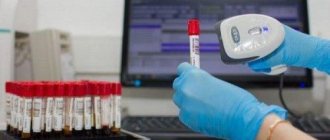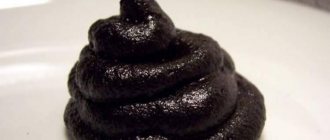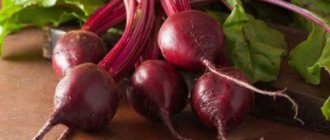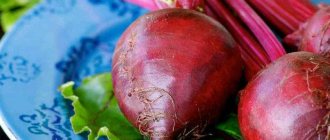Vegetable composition
Let's consider the chemical composition of beets. This vegetable contains many useful substances. It is rich in vitamins A and C and microelements (iron, zinc, potassium, manganese), as well as fiber. These compounds activate the intestines, remove toxins from the body, and help strengthen blood vessels.
Beets contain a coloring substance - betanin. It is this that gives the vegetable its rich dark red color. In addition, betanin is a good remedy for the prevention of malignant tumors. However, this substance can turn human feces dark.
Patients often ask: “Is red stool after beets normal or not?” The answer to this question will depend on how long the color lasts. It is also necessary to take into account accompanying symptoms.
What indicates health problems?
Feces after beets indicate possible problems in the body in the following cases:
A long-term change in the color of stool after beets, two-colored stool (some red, some normal) is a consequence of insufficient digestion. Possibly as a result of eating disorders, with frequent overeating, when the intestinal walls are clogged and do not work satisfactorily.- Liquid stool with pieces of beets and undigested parts of other food indicate malfunctions in the intestines.
- The appearance of too light a shade of feces after beets indicates a malfunction of the gallbladder, pancreas and liver.
- Blood in the stool signals internal damage to the digestive tract.
Beetroot is a healthy and nutritious root vegetable that has a whole range of beneficial substances. Without them, normal functioning of the body is impossible. Is it possible to eat beets for people with stomach and duodenal ulcers, diabetes, oncology, cholelithiasis, gastritis, pancreatitis and cholecystitis, as well as how to treat the liver, sore throat and runny nose with beet juice - read on our website.
Stool coloring
Red stool after eating beetroot is associated with the action of the pigment betanin. This substance is not always completely destroyed by gastric juice. For example, with low acidity in humans, it is excreted from the body through the kidneys and intestines practically unchanged. Therefore, if this color of stool does not last long, and the person feels normal, then this should not be a cause for concern. When the vegetable is completely out of the body, the color of the feces will return to normal.
Raw beet recipes are considered the most healthy. But it is precisely such dishes (for example, salads) that most often cause a change in the color of the stool. However, red feces after beets can also appear as a result of eating borscht or vinaigrette. When the vegetable is boiled, the pigment is only partially destroyed and can color human secretions.
However, it is not only red beets that can affect the color of feces. Betanine is used in many other products as a coloring agent, E-162 (beetroot red). In this form, it can also affect the color of stool. Nutritionists do not recommend eating foods with this additive, as it may contain harmful nitrates and other synthetic substances.
Laxative effect
Often, after eating beetroot dishes, red, liquid stools may occur. This manifestation usually frightens a person, because it is very reminiscent of diarrhea with blood, which can be a sign of dangerous diseases.
However, there is no need to worry ahead of time. It must be remembered that this vegetable has laxative properties. This is also due to the chemical composition of beets. The product is rich in fiber, which activates the intestines and enhances peristalsis. Therefore, moderately frequent bowel movements are natural. If at the same time a person’s health does not deteriorate, there is no abdominal pain and nausea, then an increase in bowel movements can be considered normal.
For this reason, doctors do not recommend consuming this vegetable if you are prone to diarrhea. But it can be very useful if you have difficulty bowel movements. Experts recommend a recipe made from beets with sunflower oil as a folk remedy for constipation.
However, even people who do not suffer from diarrhea should eat this vegetable in moderation. Eating beetroot dishes in large quantities can lead to intestinal upset.
What color can stool be after eating beets?
The color range of feces after taking burgundy root vegetables varies from pink to burgundy shades, and can even turn black. The coloring of stool is affected by:
- Extensive content of coloring pigment in the vegetable.
- Combination with other foods.
- Simultaneous use of medications and beets.
- Accelerated intestinal peristalsis.
- Hereditary features of metabolism.
- Level of acidity of gastric juice.
- Imbalance of microflora of the gastrointestinal tract.
We invite you to figure out why the stool after beets takes on such different shades.
Stools become red or pink if:
- At the same time as the vegetable, the person takes medications (antibiotics or tablets containing potassium).
- Beetroot initially contains a small amount of coloring pigment.
- Combination with other food products containing other dyes.
The following factors take part in the formation of black stool:
- Eating foods containing black pigment (red grapes, blueberries, black currants, prunes, strong coffee).
- Beets contain high levels of betacyanin.
- Combination with low quality alcohol (for example, wine products with a large amount of chemical dye).
- Simultaneous use of medications that color feces (ferrum-containing agents, antibacterial substances, bismuth tripotassium dicitrate, black activated carbon).
The presence of unchanged pieces of beets in feces is possible if:
- Acceleration of intestinal function. The presence of high levels of fiber in the chemical composition of beets contributes to the formation of a laxative effect, which can often lead to the development of diarrhea. Don’t be afraid of this body reaction to a vegetable.
- Thanks to the processes of evolution, the human body is set to digest predominantly protein foods. All the fiber contained in beets cannot be digested in the intestines and is excreted in its original form.
- Pathological disorders in digestion. The presence of undigested pieces of vegetables and other food in the stool in combination with poor health and impaired bowel movements indicate problems in the digestive system.
Urine color
Should urine be colored after eating beets? As we already mentioned, betanin is not always completely processed in the stomach and can be released through the excretory organs. This leads to a change in the color of urine. Its color can vary from pinkish to bright red.
Many people know about the beneficial properties of red beet juice. It is recommended to drink it for anemia, thyroid diseases and atherosclerosis. However, this drink strongly colors urine. Experts do not recommend using this product in its pure form. This drink needs to be diluted with water.
It should be remembered that when preparing for some urine tests, you need to exclude beets from your diet a few days before taking the sample. Otherwise, you may get false research results.
How does eating a vegetable affect the color of stool?
Beets have a rich red-violet color due to the presence of special substances in their composition - betacyanins. The coloring pigments of the plant are processed and discolored when they enter the stomach, and further, passing through the internal organs and intestines.
In certain cases, the natural dyes in beets are not absorbed and the plant may stain feces. The effect of root vegetables on feces can be both within normal limits and due to possible health problems.
Natural causes of color changes
- Metabolism and absorption rate . With different levels of metabolism, the coloring pigments of beets are either completely broken down, then it does not color the secretions, or they do not have time to be partially processed, and are excreted along with the feces, coloring it in burgundy shades.
Individual abilities of the body to digest pigments . A certain percentage of people normally have a lack or absence of bacteria that break down the coloring pigments of beets. In this case, after eating the root vegetable, the stool is consistently colored in a beetroot shade, they are very similar to blood.- Volume of beets eaten . If the vegetable is consumed infrequently and in small quantities, the feces may remain unchanged. When the volume of beets in food increases, or daily consumption of dishes or juices from it, excess coloring substances will be excreted along with excrement (we talked about whether it is possible to eat a vegetable every day, what the consumption rate is and the dangers of exceeding it, we talked in our article).
How long does the color last?
After eating beets, red urine may be observed for 2 days. The color of stool lasts about the same amount of time. During this time, betanin is removed from the body.
If, after beets, red feces and urine persist for a longer period, then most likely this manifestation is not related to food. If a person’s health worsens, this should be a reason to consult a doctor.
Why does not everyone change the color of urine and feces?
You may notice that after eating beets, red feces and a change in the color of urine are not observed in everyone. Does the color of stool indicate any problems in the body? This symptom only indicates that the human body poorly processes the pigment betanin. This manifestation may occur in the following conditions:
- low acidity of stomach juice;
- high acidity of urine;
- disruption of intestinal microflora;
- hereditary characteristics of metabolism.
Such conditions are not serious pathologies and do not require special treatment. If a person very often changes the color of urine and feces after consuming coloring foods, then you should take probiotics and change your diet.
Various circumstances can affect the change in color of stool. For example, if a person, along with beets, consumed other foods with pigments (carrots, red fruits and berries), this leads to a more saturated color of the discharge.
The amount of liquid you drink also plays a big role. Experts recommend drinking more water when eating beetroot dishes. This will help reduce the concentration of betanin and remove the pigment from the body faster.
Why are there pieces of undigested vegetables?
High fiber content in the plant . When consumed in large quantities, beet fiber is partially not digested, and then pieces of the root vegetable may be present in the feces. If you feel normal and there is no discomfort, then the presence of pieces of beets in the stool is considered acceptable.- Intestinal disorders . Due to the laxative effect, eating beets in combination with spicy foods, large amounts of vegetables and fruits sometimes leads to diarrhea, incomplete digestion and the appearance of pieces of the plant in the excrement. This condition in isolated cases is not a pathology and goes away with hygiene and a reasonable combination of products.
- Disturbances in the digestive system . Large undigested parts of beets and other food in the feces, poor health and abnormal bowel movements for a long time signal problems in the body.
Stool after eating root vegetables in children and adults - what is the difference?
In young children, the digestive system is not developed and reacts more quickly to changes in diet. The younger the child, the more difficult it is for the child’s body to cope with excess amounts of beet fiber. When complementary foods are first introduced, beets are excreted in the feces almost unchanged. In older children, the stool after root vegetables becomes liquefied, turns shades of red and contains pieces of undigested vegetables.
As the child grows, more enzymes appear that help in the processing of beets , the food digestion system is fully formed, and the vegetable begins to be absorbed in large volumes.
On a note! In children, beets often affect not only the color of stool, but also turn the urine reddish. This is allowed if the child feels normal, and a change in red color occurs after removing the root vegetable from the diet.
Alarming symptoms
Coloring of feces and urine is not always due to the fact that a person has recently consumed beetroot dishes. In some cases, eating this vegetable can mask the symptoms of serious illnesses. People often attribute the red color of feces and urine to eating foods with pigments. But in fact, this is a sign of pathology. In what cases is it necessary to sound the alarm?
When urine is colored, the following symptoms should alert you:
- preservation of the reddish color of urine more than 48 hours after eating the vegetable;
- the presence of impurities in the urine;
- unpleasant smell of urine;
- pain in the lumbar region;
- temperature increase;
- chills;
- discomfort when urinating.
Such manifestations cannot be associated with the consumption of beets. These are signs of diseases of the excretory organs.
When the color of a person's stool changes, the first thing that should alert them is pain and discomfort in the abdomen. This is often accompanied by nausea and vomiting. Vegetable pigments cannot cause such symptoms. Most likely, these are signs of gastrointestinal pathology.
If the stool turns black and a person experiences weakness, shortness of breath and dizziness, this is a sign of bleeding from the stomach or intestines. In this case, the patient needs emergency help.
If a person consumes an excessive amount of beets, he may experience loose and frequent stools. The feces become reddish in color. However, this phenomenon can sometimes be very difficult to distinguish from diarrhea with blood due to intestinal infections. Here you need to focus on your well-being. If loose stool mixed with blood is accompanied by abdominal pain, nausea and vomiting, then this is not due to the consumption of beets, but to an infectious pathology of the gastrointestinal tract.
Suspected diseases
If the stool is reddish or dark in color not due to vegetable pigments, then this is usually due to bleeding from the gastrointestinal tract. If the pathology occurs in the colon or rectum, the feces become red. If bleeding occurs in the upper intestines or stomach, the stool is black.
Bleeding can occur with the following gastrointestinal diseases:
- ulcerative processes;
- colitis;
- tumors;
- dilation of veins;
- hemorrhoids;
- rectal fissures;
- infectious pathologies (dysentery, amoebiasis).
The appearance of blood in the urine is also an alarming symptom. This may be a manifestation of the following pathologies:
- urolithiasis;
- pyelonephritis;
- glomerulonephritis;
- kidney injuries;
- poisoning with salts of heavy metals.
Such diseases require immediate treatment. Therefore, it is not always necessary to associate the color of urine and feces only with the consumption of pigmented vegetables and berries.
How to distinguish blood from the color of beets?
Normally, after eating beets, the consistency of stool becomes softer. And the color varies from normal to various shades of red. A small amount of undigested vegetable is acceptable. The subjective state does not worsen.
Let's look at the effect of blood from different parts of the gastrointestinal tract on feces:
1. Black feces with a fetid odor and a tarry consistency indicate a pathology of the upper parts of the digestive system.
Interesting
When blood enters the stomach, a chemical reaction occurs, the products of which are hematin hydrochloride. The resulting substance has a dark brown color.
2. The presence of blood streaks in excrement is characteristic of pathology of the lower intestines. The difference between bloody veins and undigested beets is manifested in the fibrous structure of the latter.
Important!
To accurately determine the presence of blood in stool, it is necessary to undergo a stool test.
3. Hemorrhoids or anal fissures leave drops or streams of scarlet blood on the stool.
Analyzes
If you have any doubts about the change in color of the discharge, you need to consult a doctor and undergo a series of tests. A stool test will help determine the presence of blood. You just need to remember that a few days before the analysis you need to exclude coloring foods from your diet.
If the color of urine lasts more than 2 days after eating beets, then you need to undergo a general clinical analysis of urine. If necessary, the doctor will refer you for a Nechiporenko test. This urine test accurately determines the number of red blood cells.
If you suspect kidney disease, you should also undergo ultrasound diagnostics. This will help to examine changes in the excretory organs and determine the cause of bleeding.











